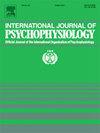Exploring the relationship between sleep patterns, alcohol and other substances consumption in young adults: Insights from wearables and Mobile surveys in the National Consortium on alcohol and NeuroDevelopment in adolescence (NCANDA) cohort
IF 2.6
3区 心理学
Q3 NEUROSCIENCES
引用次数: 0
Abstract
Introduction
The use of psychotropic substances has negative short- and long-term health outcomes, including complex direct and indirect effects on sleep and sleep-cardiovascular function. Here, we investigate daily relationships between self-reported substance use and objective measures of sleep and sleep-related heart rate (HR) in community-dwelling young adults.
Methods
Fifty-five healthy young adults (Mage = 23.1 ± 2.29 y, 30 female) in the National Consortium on Alcohol and Neurodevelopment in Adolescence (NCANDA) study completed a 28-day ecological momentary assessment protocol, including remote sleep and HR measurements via Fitbit devices, as well as daily app-based self-reports of alcohol and other substance use.
Results
A total of 1459 days of data were collected. Caffeine was the most frequent substance used, followed by alcohol, cannabis, nicotine, and other drugs. The analysis showed that substance use was associated with delays in sleep start and end time, reduced sleep duration and efficiency, and increased wake after sleep onset. Increases in sleep heart rate were associated with prior-day alcohol use.
Discussion
Substance use negatively influences sleep and sleep HR. These preliminary data highlight the potential value of using remote multimodal data collection to investigate the daily relationships between substance use and sleep in young adults, in an ecological setting.
探索年轻人睡眠模式、酒精和其他物质消费之间的关系:来自全国青少年酒精和神经发育联盟(nanda)队列的可穿戴设备和移动调查的见解
精神药物的使用具有短期和长期的负面健康结果,包括对睡眠和睡眠-心血管功能的复杂直接和间接影响。在这里,我们调查了社区居住的年轻人自我报告的物质使用与客观睡眠测量和睡眠相关心率(HR)之间的日常关系。方法全国青少年酒精与神经发育协会(nanda)研究的55名健康年轻人(年龄= 23.1±2.29岁,30名女性)完成了一项为期28天的生态瞬时评估方案,包括通过Fitbit设备远程睡眠和HR测量,以及每天基于app的酒精和其他物质使用自我报告。结果共收集数据1459天。咖啡因是最常用的物质,其次是酒精、大麻、尼古丁和其他药物。分析表明,药物使用与睡眠开始和结束时间的延迟、睡眠持续时间和效率的降低以及睡眠开始后醒来的增加有关。睡眠心率的增加与前一天饮酒有关。药物使用对睡眠和睡眠HR有负面影响。这些初步数据强调了在生态环境中使用远程多模态数据收集来调查年轻人物质使用与睡眠之间的日常关系的潜在价值。
本文章由计算机程序翻译,如有差异,请以英文原文为准。
求助全文
约1分钟内获得全文
求助全文
来源期刊
CiteScore
5.40
自引率
10.00%
发文量
177
审稿时长
3-8 weeks
期刊介绍:
The International Journal of Psychophysiology is the official journal of the International Organization of Psychophysiology, and provides a respected forum for the publication of high quality original contributions on all aspects of psychophysiology. The journal is interdisciplinary and aims to integrate the neurosciences and behavioral sciences. Empirical, theoretical, and review articles are encouraged in the following areas:
• Cerebral psychophysiology: including functional brain mapping and neuroimaging with Event-Related Potentials (ERPs), Positron Emission Tomography (PET), Functional Magnetic Resonance Imaging (fMRI) and Electroencephalographic studies.
• Autonomic functions: including bilateral electrodermal activity, pupillometry and blood volume changes.
• Cardiovascular Psychophysiology:including studies of blood pressure, cardiac functioning and respiration.
• Somatic psychophysiology: including muscle activity, eye movements and eye blinks.

 求助内容:
求助内容: 应助结果提醒方式:
应助结果提醒方式:


